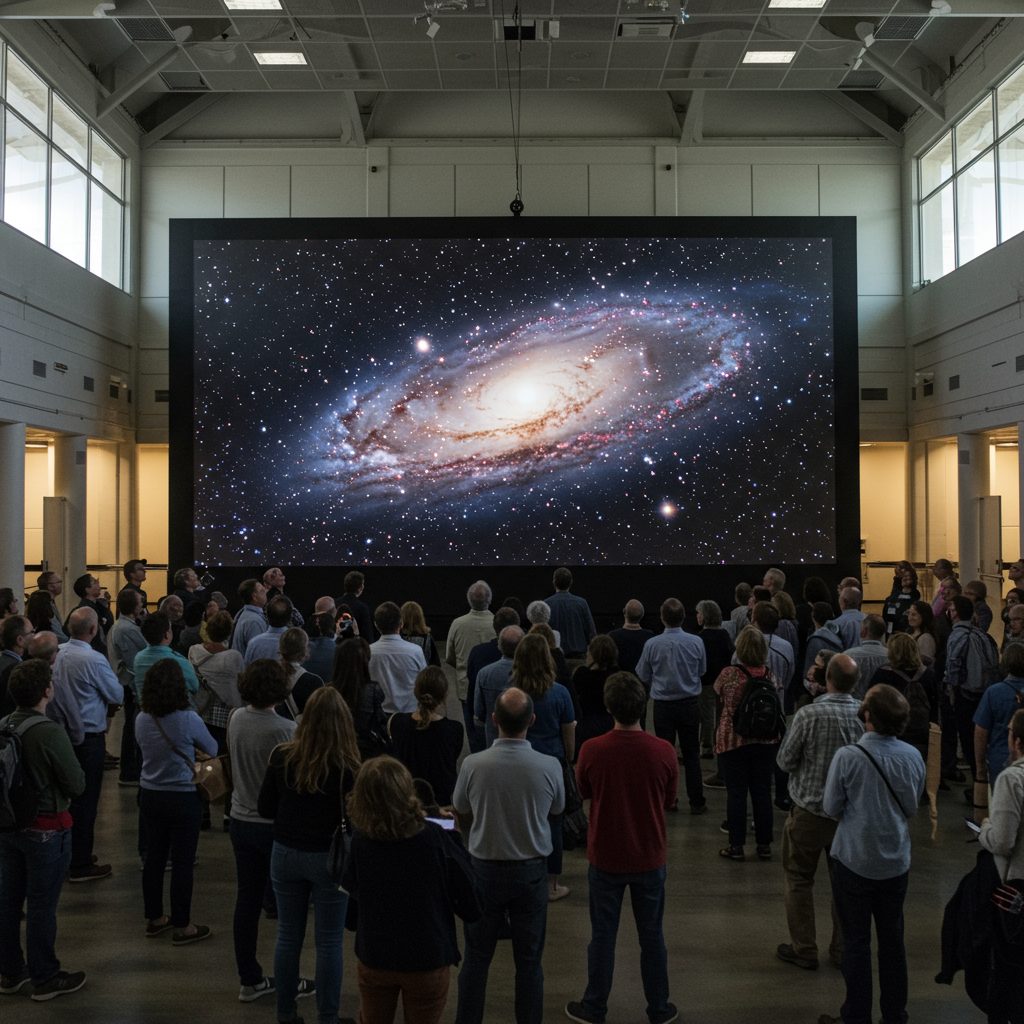The night sky holds countless wonders, but sometimes, those wonders involve explosive celestial collisions. In a remarkable feat of astrophotography, Japanese astronomer Daichi Fujii recently captured breathtaking video evidence of two meteors slamming into the Moon. These brief, brilliant flashes, visible from Earth, offer a rare glimpse into the constant bombardment our nearest celestial neighbor endures. His observations provide crucial insights into the dynamics of space rocks and their interactions with airless worlds.
A Glimpse of Cosmic Collisions
During a period of heightened meteor activity, two dramatic impacts unfolded on the lunar surface. On Thursday, October 30, and again on Saturday, November 1, Japanese astronomer Daichi Fujii documented separate meteoroid strikes. These events were likely linked to the ongoing Taurid meteor shower, known for its slow-moving, bright fireballs. Fujii, a respected curator at the Hiratsuka City Museum, utilized specialized cameras focused on the Moon’s nightside to record these fleeting explosions of light. His dedication to lunar observation has made him a leading figure in documenting these often-unseen phenomena.
Decoding the October 30 Impact
The first recorded impact occurred at 8:30 p.m. Japan Standard Time on October 30. Fujii’s meticulous analysis places this powerful strike just east of the prominent Gassendi Crater. Calculations suggest the space rock, believed to be part of the Taurid meteor stream, hit the lunar surface at an astonishing velocity of 27 kilometers per second (60,000 mph). The impact angle was estimated at 35 degrees.
This particular meteoroid was relatively small, with an estimated mass of just 0.2 kilograms (0.4 pounds). Despite its modest size, the sheer speed of the collision created a brilliant flash that lasted a mere 0.1 seconds. Fujii noted that the pixels in his recording were saturated, indicating the flash was likely even brighter than the captured data fully conveyed. Such an event would have excavated a new crater approximately 3 meters (10 feet) wide.
The November 1 Event
Just two days later, at 8:49 p.m. Japan Standard Time on November 1, a second meteoroid struck the Moon. This impact appeared west of Oceanus Procellarum, one of the Moon’s vast dark plains known as lunar maria. While its definitive origin (whether Taurid or a sporadic meteor) awaits full confirmation, its timing perfectly aligns with the increased activity associated with the Taurid meteor showers. These observations are the latest in Fujii’s extensive catalog of lunar impact documentation, showcasing his remarkable skill and perseverance.
Why Lunar Impacts Matter: Earth vs. Moon
The phenomenon of meteors striking the Moon offers a stark contrast to how Earth experiences cosmic debris. Our planet boasts a thick, protective atmosphere. This atmospheric shield causes most incoming meteors to vaporize due to friction, creating the familiar streaks of light we call “shooting stars.” Only larger, more resilient meteoroids survive to become meteorites hitting the ground.
Unshielded Collisions on the Lunar Surface
The Moon, however, lacks a significant atmosphere. This absence means there is nothing to slow down incoming space rocks. They crash directly into the lunar surface at incredible velocities, typically ranging from 20 to 72 kilometers per second (45,000 to 160,000 mph). These high-speed collisions release immense amounts of light and heat, generating powerful bursts of energy. The flashes Fujii captured are direct evidence of these explosive events.
Such impacts, even from small meteoroids, can excavate surprisingly large craters. According to NASA, a rock weighing just 5 kilograms (11 pounds) can gouge a crater over 9 meters (30 feet) wide. It can also eject more than 75 metric tons of lunar soil and rock into space. The Moon’s heavily cratered face is a testament to its long history of continuous bombardment.
NASA’s Crucial Lunar Impact Monitoring
Monitoring these lunar impacts is not just for scientific curiosity; it’s a critical safety measure. NASA’s Automated Lunar and Meteor Observatory (ALaMO), located at the Marshall Space Flight Center, continuously tracks these events. The primary goal of ALaMO is to gather data that will help safeguard future lunar explorers and long-term science missions to the Moon. By understanding the frequency and intensity of impacts, scientists can better design habitats and equipment. In fact, NASA researchers have detected what they describe as the “brightest explosion in the history of their program,” highlighting the potent nature of some of these strikes. These observations also provide invaluable context for understanding how the rate of asteroid impacts has varied throughout cosmic history.
Fujii himself previously documented what he described as his “biggest lunar impact flash” in February 2023. That particular event, near the Ideler L and Pitiscus craters, produced a flash that persisted for over a second. Such observations vividly demonstrate that each visible flash signifies the precise moment a new crater is formed.
The Taurids and Other Celestial Fireworks
The recent lunar impacts coincide with the peak activity of the Southern and Northern Taurid meteor showers. These showers are known for their spectacular fireballs, which are exceptionally bright meteors. The Taurids originate from debris shed by Comet 2P/Encke, and Earth passes through this stream annually. Their slow speed and tendency to produce brilliant fireballs make them a favorite among stargazers.
Other Meteor Shower Activity
While the Taurids claim the spotlight for these lunar events, other meteor showers also grace our skies. The Orionid meteor shower, for instance, produced by debris from Halley’s Comet, peaks around late October. During its peak, observers can expect to see between 10 to 20 shooting stars per hour. These meteors strike Earth’s atmosphere at a blistering 66 kilometers per second (41 miles per second), creating dazzling streaks of light. The radiant point for the Orionids is near the red supergiant star Betelgeuse in the constellation Orion. These co-occurring showers remind us that Earth and its cosmic neighbors are constantly moving through a busy environment of space debris.
The Dedication of a Lunar Observer
Daichi Fujii’s contributions to astronomy are immense. He has been observing lunar impact flashes consistently since 2020, with his initial observations stretching back to 2011. Using his 20cm telescope, he typically detects about one impact flash for every few dozen hours of observation. Despite challenges like the thin crescent moon being visible only briefly or obscured by clouds, he manages to record several dozen flashes each year. To date, Fujii has documented over 60 such impacts, each one a testament to his expertise and dedication. His work provides vital real-time data on the frequency and characteristics of these extraterrestrial collisions, enriching our understanding of the Moon’s dynamic environment.
Frequently Asked Questions
What causes the bright flashes when meteors hit the Moon?
When meteors strike the Moon, they create bright flashes because the Moon lacks a substantial atmosphere. Unlike Earth, where most meteors burn up due to atmospheric friction, meteors on the Moon hit the surface directly at extremely high speeds. This impact generates immense kinetic energy, converting it into heat and light. The resulting explosion creates a brief, brilliant flash, often visible from Earth, marking the formation of a new crater.
Who monitors lunar impacts, and why is this research important?
Lunar impacts are primarily monitored by dedicated astronomers like Daichi Fujii and by specialized facilities such as NASA’s Automated Lunar and Meteor Observatory (ALaMO). This research is critically important for several reasons. It helps scientists understand the rate of meteoroid bombardment, informs strategies to safeguard future lunar explorers and long-term missions, and provides data on how the abundance of space debris has changed over cosmic history.
How frequently do meteors impact the Moon, and why are they difficult to observe?
Meteors impact the Moon frequently; observations indicate they occur several times a month. However, capturing these events visually is rare. They are difficult to observe because the flashes are extremely brief, often lasting less than a second, and can be relatively faint depending on the size of the impactor. Observers also contend with challenges such as the Moon’s phase, its position low in the sky, and terrestrial weather conditions like clouds, all of which limit observation windows.
Conclusion
The recent video captures by Daichi Fujii serve as a powerful reminder of the active, ever-changing nature of our solar system. These stunning lunar impact events, likely tied to the Taurid meteor shower, underscore the Moon’s role as a silent witness to countless cosmic collisions. Through the diligent efforts of astronomers like Fujii and institutions like NASA, we gain invaluable insights into phenomena that shape celestial bodies. Such research is not only fascinating but also vital for understanding the hazards of space and for planning the future of lunar exploration.




